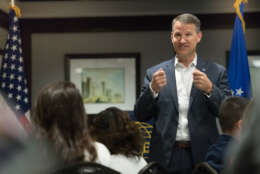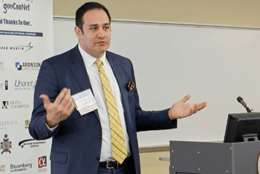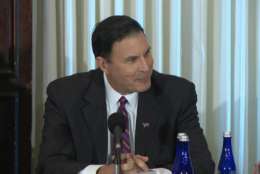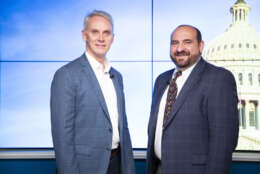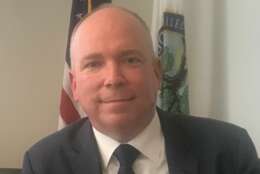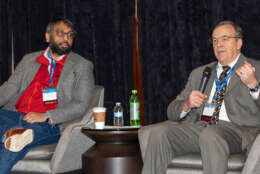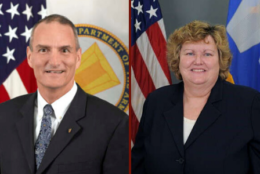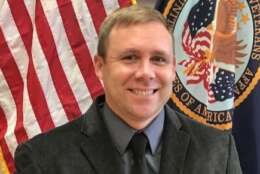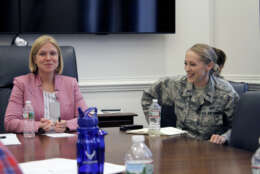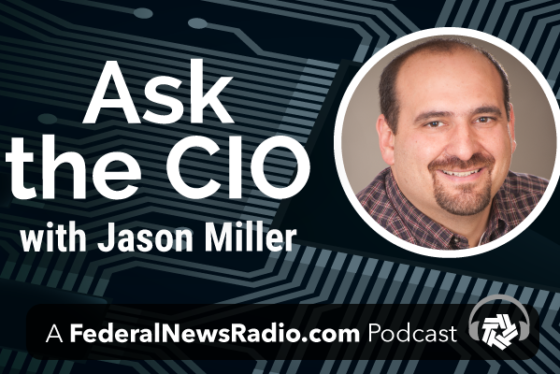Ask the CIO Podcasts
-
Bill Marion, the Air Force’s chief information officer, said through one of the enterprise IT-as-a-service pilot programs, the service is reimagining help desk and end user support services.
April 06, 2020 -
Renee Wynn, the NASA chief information officer, is retiring after about 30 years in government and is leaving the space agency on track to fix long-standing IT governance challenges.
March 27, 2020 -
Rajiv Uppal at the Centers for Medicaid and Medicare Services, and Jose Arrieta at HHS said bringing the mission offices into the IT modernization discussion is having real impacts.
March 16, 2020 -
Joe Klimavicz, who retired after six years as the Justice Department CIO, said during his tenure the agency has significant strides in modernizing technology and providing improved services.
March 06, 2020 -
The National Geospatial-Intelligence Agency is in the middle of both a revolution and an evolution when it comes to technology.
February 24, 2020 -
Jason Gray, the Education Department’s chief information officer, said fixing long-standing problems like laptops that took 20-to-40 minutes to boot up and log in and printer sprawl helped lay the groundwork for the next set of initiatives.
February 21, 2020 -
Nagesh Rao, the director of business technology solutions at the SBA, and Jim Trinka, the chief talent management officer in the Office of Information and Technology, say by focusing on customer experience, the applications, systems and people are improving how they meet their mission goals.
February 14, 2020 -
Karen Wrege, the chief information officer of the Directorate of Defense Trade Controls at the State Department, said having one system for identity credential and access management that is based on roles and responsibilities has solved one of the biggest challenges in government.
February 04, 2020 -
Gundeep Ahluwalia, the Labor Department’s CIO, said the money spent on legacy technology has dropped by 10% over the last few years thanks in part to creating a common platform and setting guidelines.
February 03, 2020 -
Greg Garcia, the deputy CIO and chief data officer for the Army, and Eileen Vidrine, the Air Force’s CDO, are finding ways to increase the value of data that is leading to better decisions and cost savings.
January 24, 2020 -
Ryan Woodward, the Director of the Franchise Budget Office for Infrastructure Operations in the Office of Information and Technology at VA, said the agency has spent the last few years learning how to apply Technology Business Management (TBM) standards and now are starting to see the results of that effort.
January 16, 2020 -
Lauren Knausenberger, the chief transformation officer for the Air Force, said commercial network and cloud services will ensure the service stays modern, secure and can adapt to the ever-changing challenges.
January 13, 2020 -
Shane Barney, the chief Information Security Officer at USCIS, and Togi Andrews, the CISO at FEMA, say automation and reskilling of the workforce is part of how they are evolving their security operations centers.
December 20, 2019 -
Jenny Rone, the assistant inspector general for data science at the Department of Agriculture, and Larry Koskinen, the chief risk officer for the Department of Housing and Urban Development, are turning to pilots to use data in new ways and gain support throughout the agency.
December 16, 2019 -
Roger Greenwell, the chief information officer, the authoring official and risk management executive at DISA, said the agency is focused on understanding where the cyber threats are, how does it take that information and make sure they are addressing those key protection priorities.
December 06, 2019

